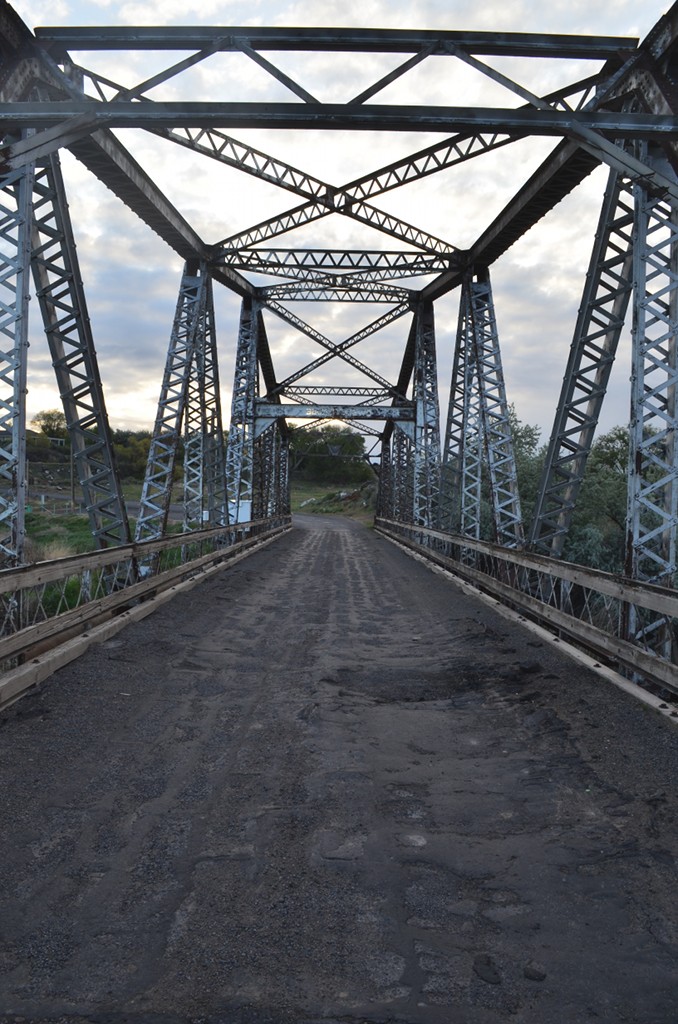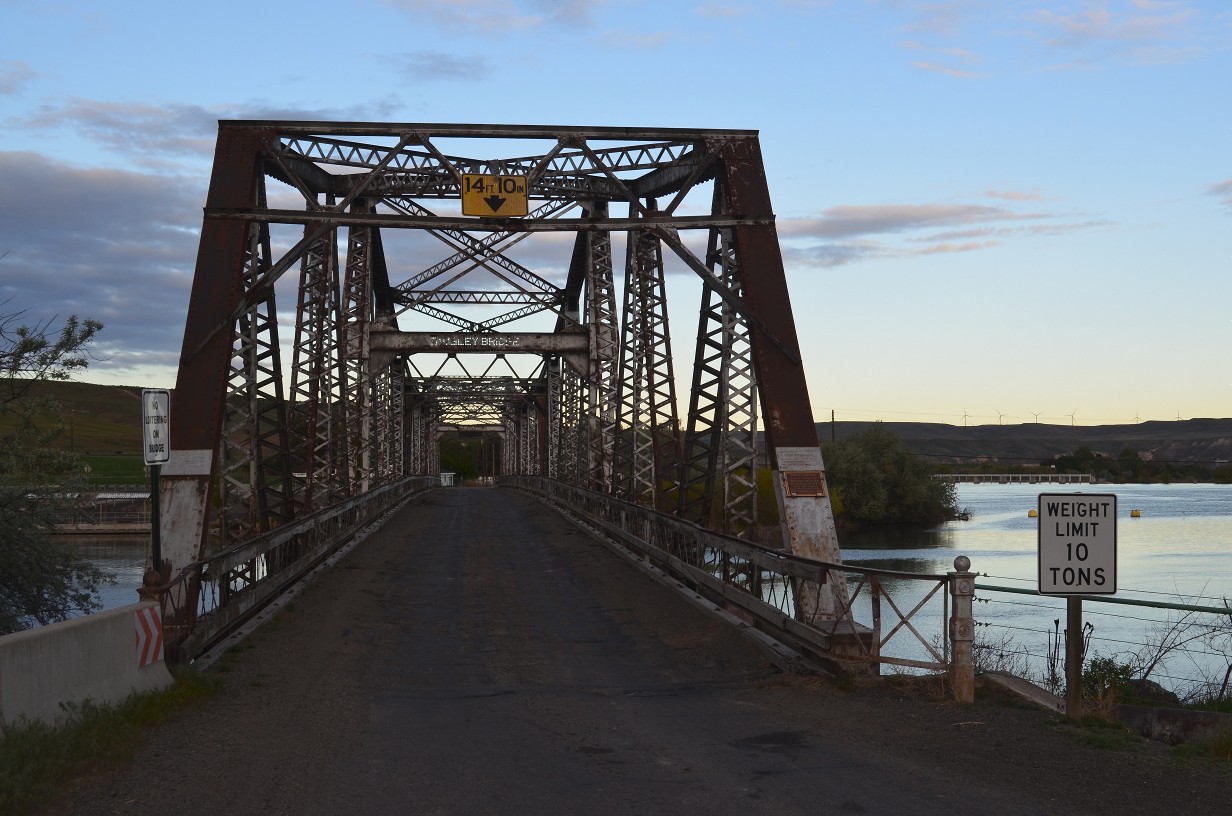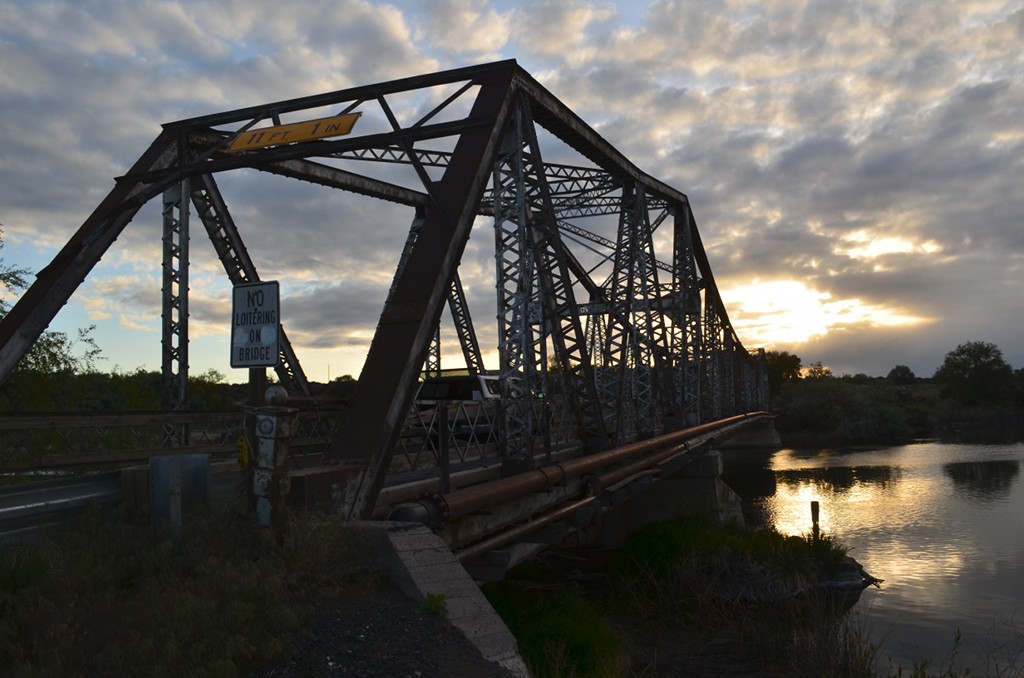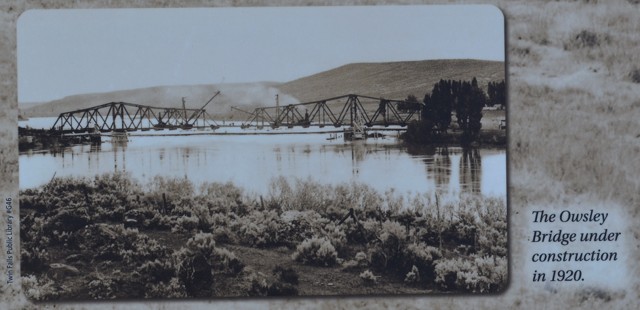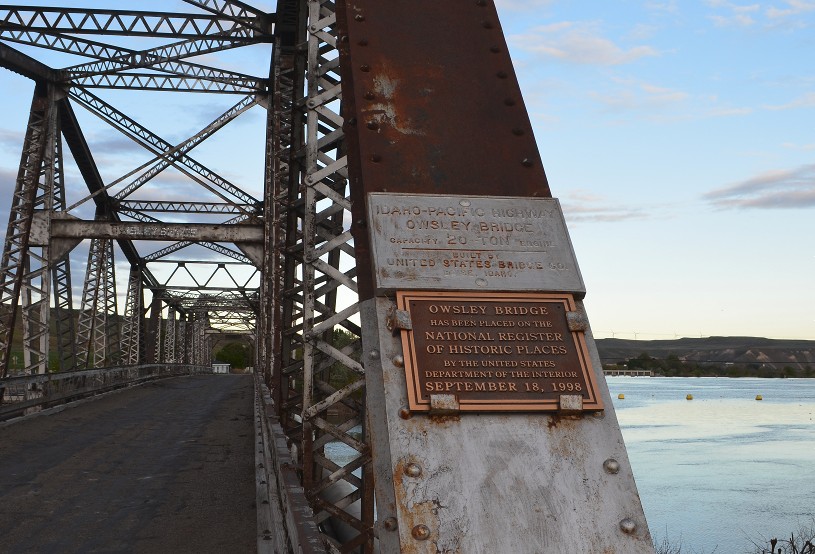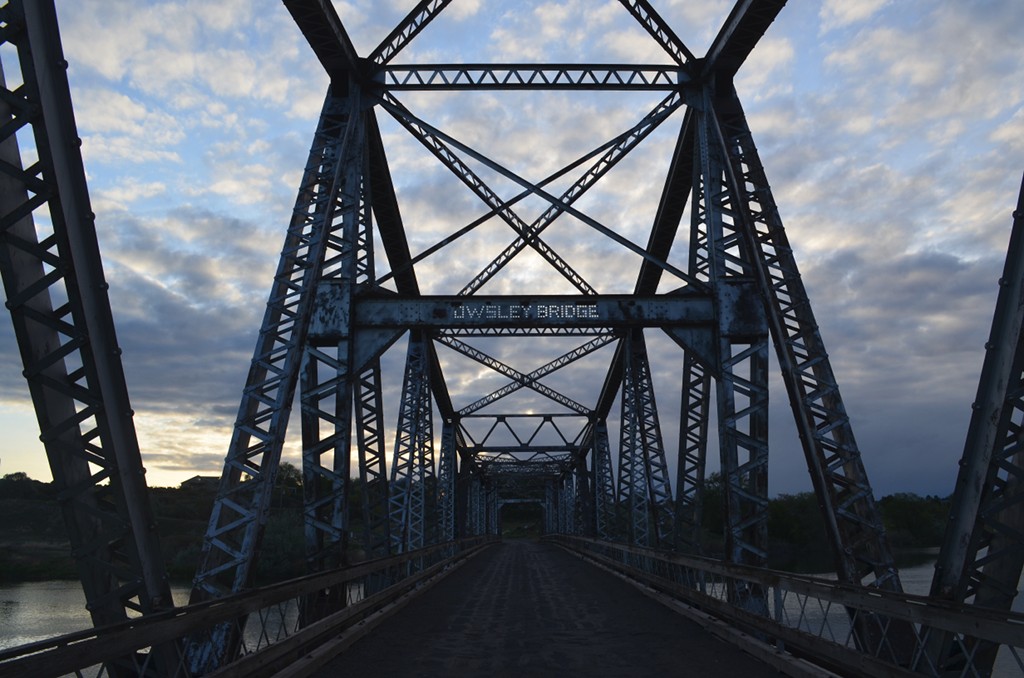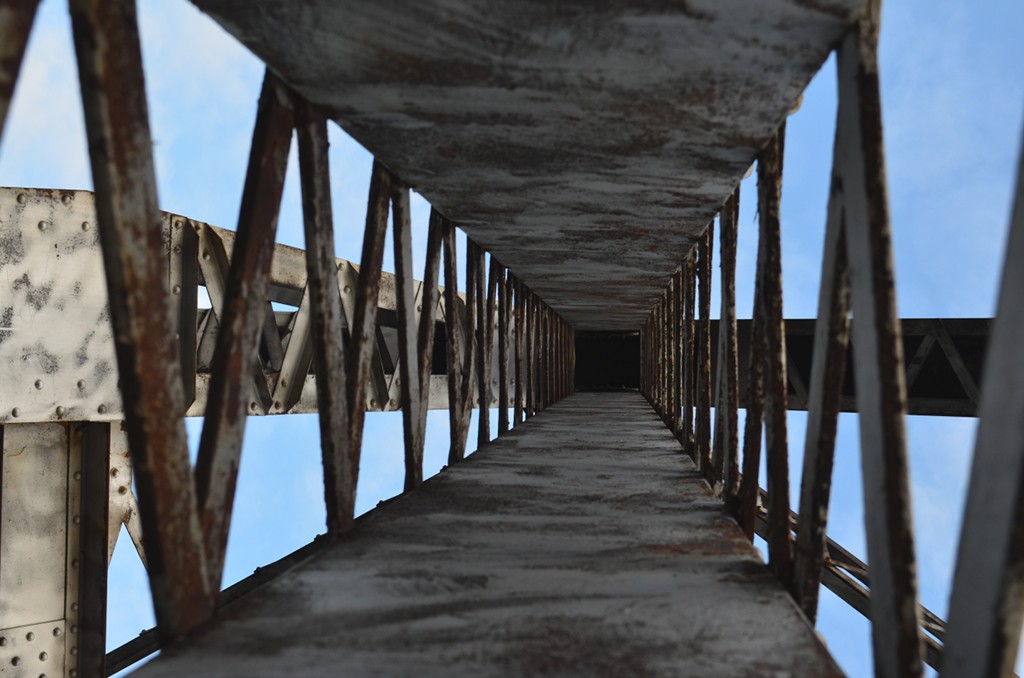Type: Steel Warren through-truss
Location: Snake River, near Hagerman, Idaho
Length: 433.1ft
Spans: 3
Longest Span: 264.1ft
Constructed: 1920-21
Cost: $127,000
Reason for honorable mention: Substantial deterioration due to age; according to the last inspection the bridge structure is basically intolerable requiring [a] high priority of corrective action. This bridge is a good candidate for an overweight truck to take out. Remember: if you are the driver that does so, you could be ticketed!
One probable collapse scenario is a traffic overflow from the nearby highway 30. If something such as an accident causes normal highway traffic to reroute over the bridge there could be a large number of vehicles trying to cross...
Weight Limit: 10 Tons
The current weight limit is clearly posted; restrictions on vehicle spacing are also posted. However, the limit is low enough that it could be easily exceeded by a light truck towing a trailer. And given the tendency of impatient American drivers to tailgate, it would be questionable to count on vehicle spacing to avoid an overload.
There are also several pipes crossing the bridge, at least one of which appears to be in use. Rerouting these (and removing unused pipes) is one way to reduce the dead load, thus improving bridge safety. The load could also be reduced by replacing the deck with something lighter weight - hopefully at the same time as correcting the structural problems.
A historic bridge...
In 1920 this bridge was made with substantially different construction methods than modern bridges.
The Owsley Bridge is on the national register of historic places. This will help preserve an interesting and valuable peace of engineering history. It also gives the Hagerman Highway District the difficult problem of correcting this bridges safety problems while preserving its historic value. It could well be easier closing this bridge to vehicle traffic, building another vehicle bridge nearby, and turning this into a pedestrian only bridge. Whatever is done to improve safety will be neither cheap nor easy.
While through trusses have their drawbacks, they allow appreciation of bridge design. And having the bridges name in the overhead beam is a nice touch.
A large part of the bridge is made from built up box girders, which were common at the time this bridge was made.
Should this bridge be preserved as historic, doing whatever it takes to make it safe? Should it be torn down and replaced? Or should it be left as-is until nature decides that we shall pay the price for our lack of foresight? If we take action, be it repair or replacement, it will be costly. Who should pay that cost? Would you approve a few cent increase in the gas tax to improve our nations bridges? Or would you help vote anyone out of office that considers such a thing?
One thing is sure: voters seldom understand the cost and complexity of implementing the demands they make of engineers.
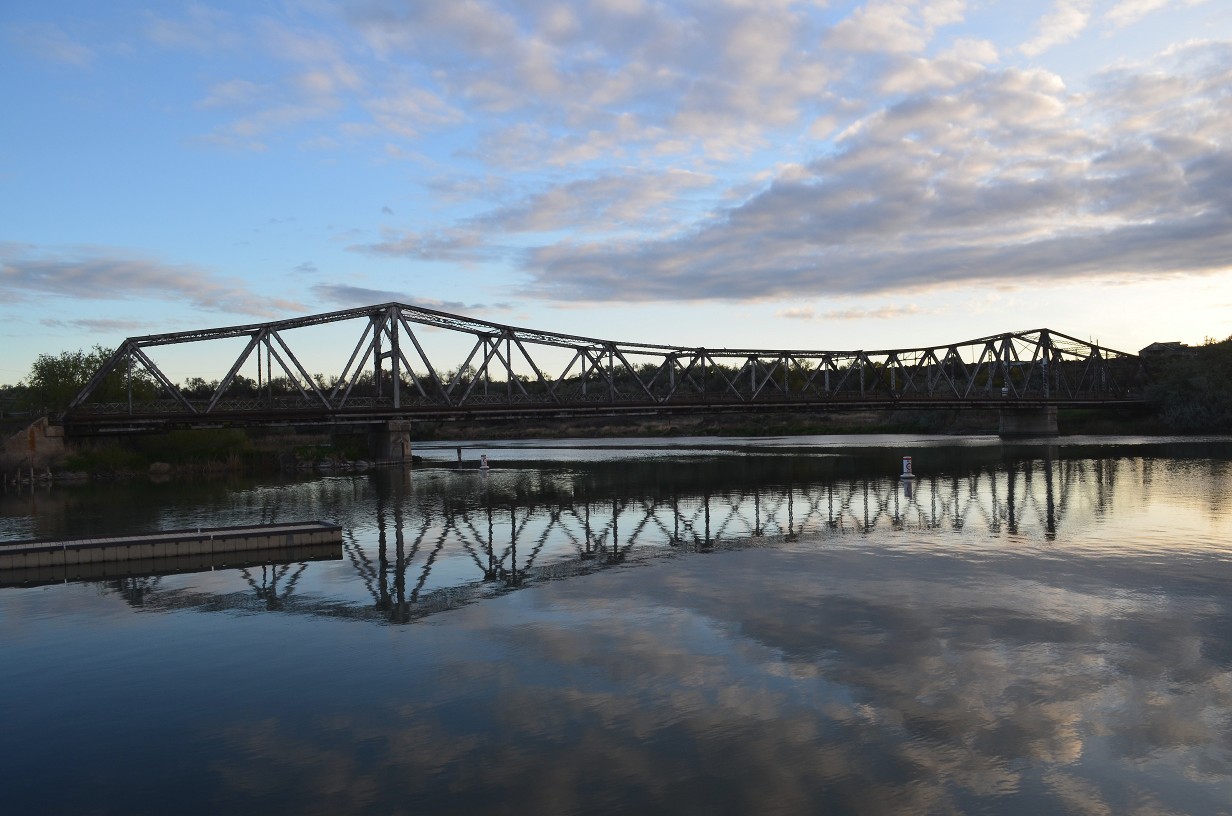
Last Updated: October 2014; Corrected bridge owner.
© David C. Hunter, 2012-2014
fb {at) dragonsdawn (dot] org


